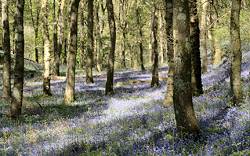Summary
What do people think about publicly owned woods and forests in England?
Summary

Forestry Commission England manages about 258,000 hectares of land, providing many social, environmental and economic benefits and improving people’s lives. Forest Research used existing data and a public survey to compare people’s perceptions and expectations of this public forest estate (PFE) with woodland under private ownership.
Key findings
Strong views – only a third of respondents knew who owned the woods they visit, but most people had clear views on how public money should be spent and what benefits publicly owned and managed forests should provide
- Recreation, access and facilities – people felt more strongly about getting services and value from public woodlands than from private ones
- Expectations – for all woodland types, people said woodlands were most important for wildlife habitat, followed by recreation, landscape conservation, climate change mitigation and education
- Cost-effectiveness – many people in study discussion groups felt that the PFE was run cost-effectively; some were surprised how little public resource was actually used
Profile of users
- Typical PFE user – more likely to be older, male, married, white, have children, be in full-time employment and live in rural areas (compared to people who used other woods, or did not know the ownership of the woods they used)
- Reasons for visiting – women were more likely than men to give particular reasons for visiting a woodland (typically for safety and child friendliness)
- Disabled people had a slight preference for dog-walking as a reason to visit woodlands, were more likely to appreciate woodlands for the scenery, variety of trees, fresh air and their wider societal benefits than others, and less likely to cite physical activities as a value
- Those working with disabled people would like to see improved communication and information about access (suitable paths and facilities) available locally
- People who described themselves as belonging to black or ethnic minority groups were less likely to value public woodlands for walking and wildlife, and more likely to value them for climate change and tourism than ethnically white people
- Older people are more likely than others to value woods for wildlife; and younger and middle-aged people are more likely to value woods for activities
- Those on lower incomes are more likely to value woods as a place to get away, or take the children; while those on higher incomes are more likely to values woods for their contribution to the landscape
This work formed part of the evidence base for a study of the long-term role of the PFE by FCE undertaken in 2009
Publications and reports
Funding and partners
Commissioned and funded by Forestry Commission England.
Status
2008-2009

